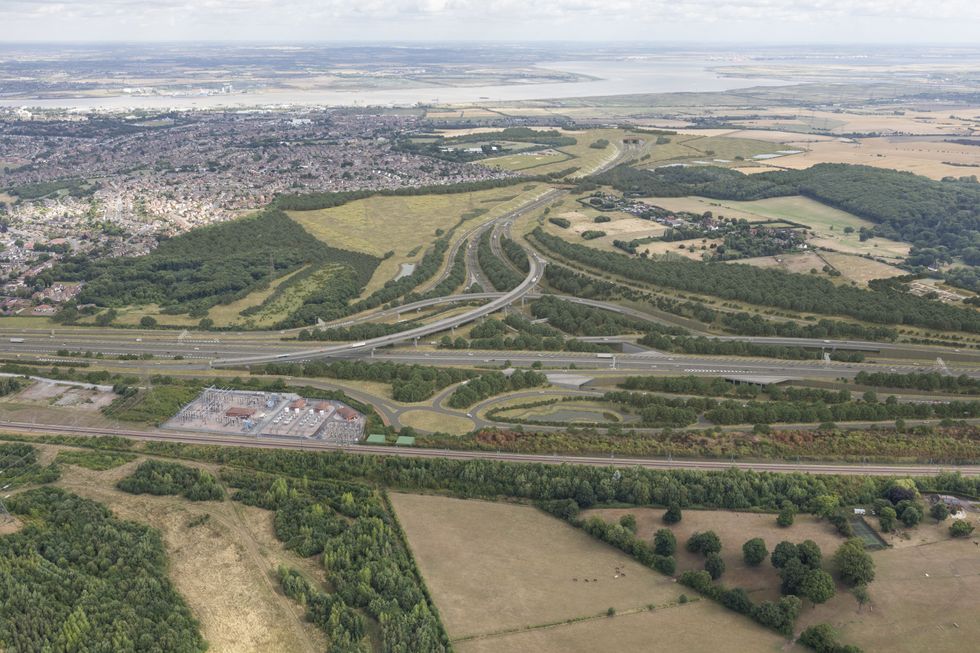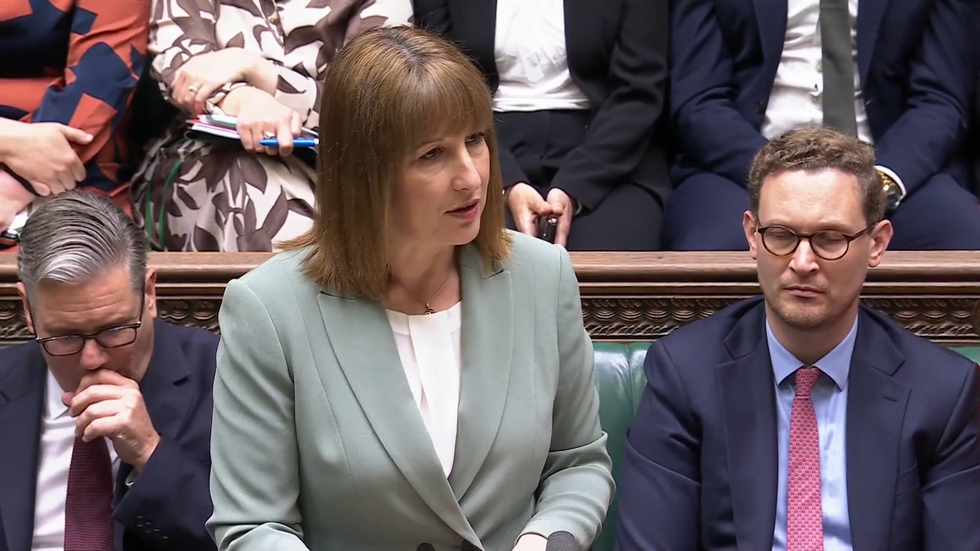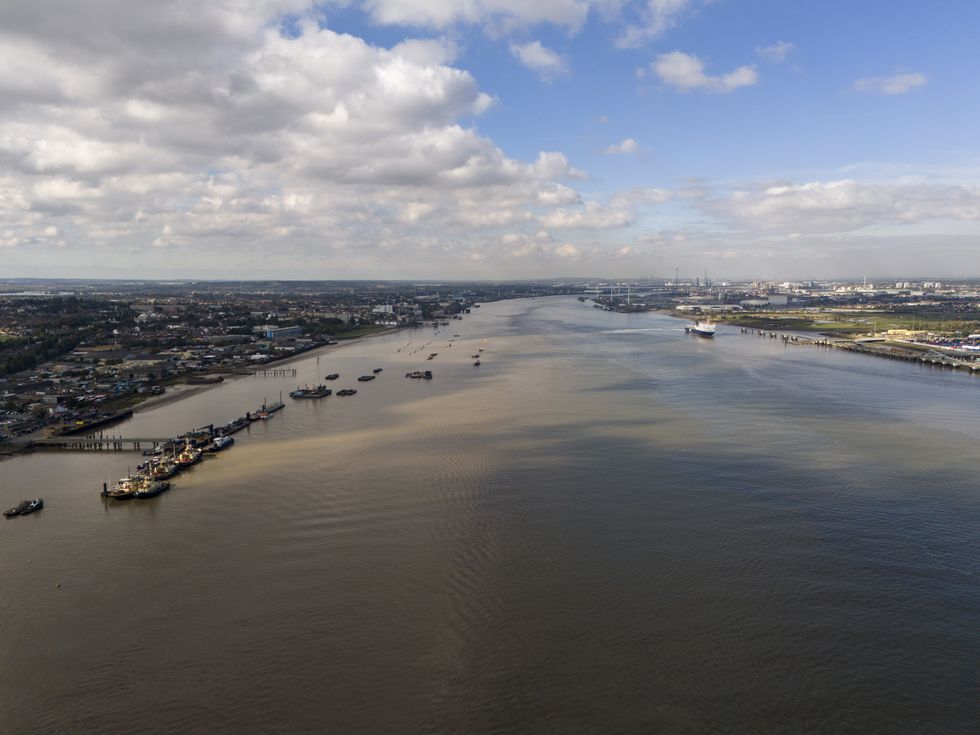Rachel Reeves to splash £1bn on Lower Thames Crossing and road projects in major 'turning point' for drivers
WATCH: GB News discusses the Lower Thames Crossing
|GB NEWS

The Chancellor allocated £590million towards the Crossing project
Don't Miss
Most Read
Drivers across the southeast are set to benefit from new roads as plans for the Lower Thames Crossing, as well as other projects, move ahead.
Chancellor Rachel Reeves allocated a new £1billion funding to the project as well as other refurbishments across the UK.
The funding will also see the Department for Transport repair roughly 3,000 bridges which are currently unable to support the heavier vehicles due to their fragile state.
As part of the new investment, Reeves has allocated a further £590million for the Lower Thames Crossing, which hopes to cut congestion build-up at Dartford.
Do you have a story you'd like to share? Get in touch by emailing motoring@gbnews.uk
 The Lower Thames Crossing would connect to the A2 and M2 in Kent | NATIONAL HIGHWAYS
The Lower Thames Crossing would connect to the A2 and M2 in Kent | NATIONAL HIGHWAYSReeves said: "When it comes to investing in Britain’s renewal, we’re going all in by going up against the painful disruption of closed bridges, crossings and flyovers, and ensuring they’re fit to serve working people for decades to come.
"The investment also goes even further and faster to spread growth by providing critical funding to take forward the Lower Thames Crossing – not just boosting connectivity in the southeast, but ensuring a smoother, less congested passage of vital goods from Europe to our regions."
She added that the funding is a "turning point" for the national infrastructure, with the Crossing hoping to generate thousands of jobs as well as connect communities.
The investment follows the £15.6billion funding which was announced at the Spending Review dedicated to transport.

Rachel Reeves delivered her Spending Review in the Commons last week
|PARLIAMENT TV
Transport Secretary, Heidi Alexander, shared: "We’re finally getting on with the Lower Thames Crossing — a crucial project to drive economic growth, that has been stuck in planning limbo for far too long.
"This project is essential for improving the resilience of a key freight route and is critical to our long-term trade with Europe.
"It will speed up the movement of goods from southeast England to the Midlands and the North, crucial to thousands of jobs and businesses."
The 14.5-mile crossing will connect Kent, Thurrock and Essex, and link the existing road network from the A2/M2 to the M25.
The project has faced significant barriers over the past few years, with National Highways finally given the green light on October 31, 2022, with subsequent funding made available.
LATEST DEVELOPMENTS:
- Sadiq Khan to ban all cars from Oxford Street as new proposals move ahead 'as quickly as possible'
- Plans to soften driving licence penalties for speeding on 20mph roads slammed - 'Sends wrong message'
- DVLA issues could see certain vehicle owners shown incorrect car tax rates just months after price hikes
 Location of the proposed Lower Thames Crossing between Kent and Sussex | PA
Location of the proposed Lower Thames Crossing between Kent and Sussex | PAAlexander added: "Our structures fund will make long-overdue investments to repair ageing structures across the country, speeding up journeys, restoring pride and delivering our Plan for Change to boost the economy and support regional growth."
Matt Palmer, Executive Director, Lower Thames Crossing, shared that the funding announced means, with planning consent secured and no legal challenges, "we can now take the steps necessary to bring in billions in private investment and get on with delivering this vital economic infrastructure project at pace".
The project hopes to start construction as early as 2026, with the new road expected to open in the early 2030s.
The project is also designed to be Britain’s greenest road, with the scheme hoping to reduce its own carbon footprint through the use of low-carbon materials and methods.
 Lower Thames Crossing proposed route | PA
Lower Thames Crossing proposed route | PAIt will also create six times more green space than roads, and include one million trees, community woodland, two new public parks, and 40 miles of new and improved pathways for walkers, cyclists, and horse riders.
Before the main construction gets underway, the project will work with local authorities, landowners, and stakeholders to refine aspects of the design to reduce the impact of construction on communities.
Over the coming months, National Highways will also carry out archaeological, ecological, and topographical surveys, as well as further ground investigations to prepare the detailed design and construction plans.
"We are shovel-ready and have our delivery partners on board, and the decision allows us to work with the Government on funding and start the detailed planning that will let us start construction as soon as possible," Palmer said.










